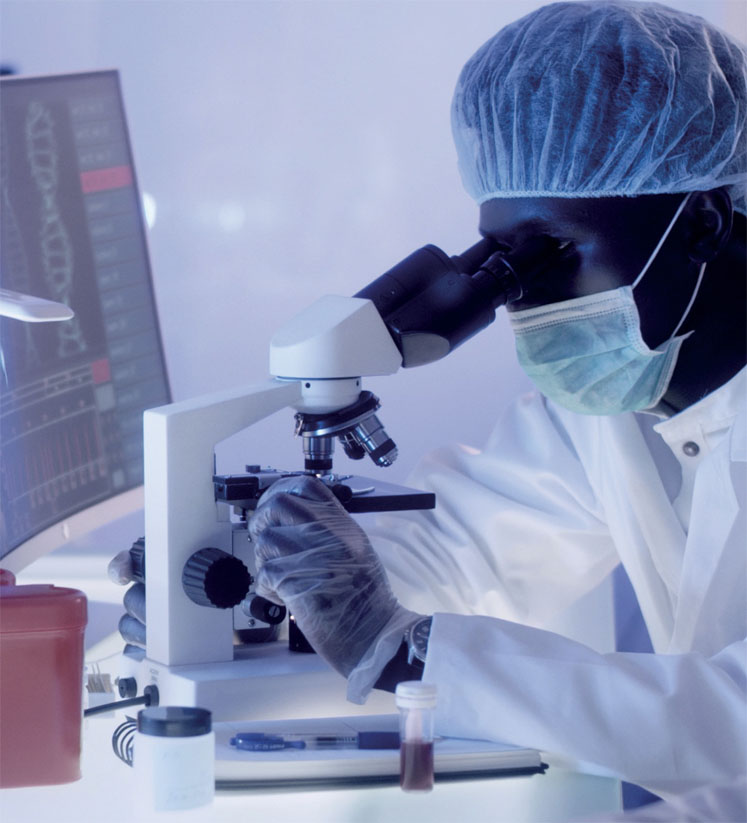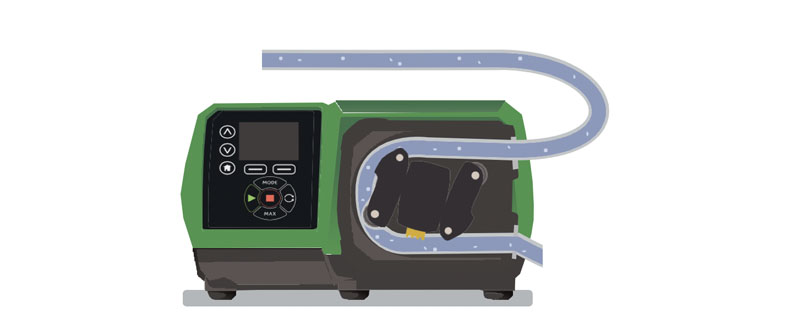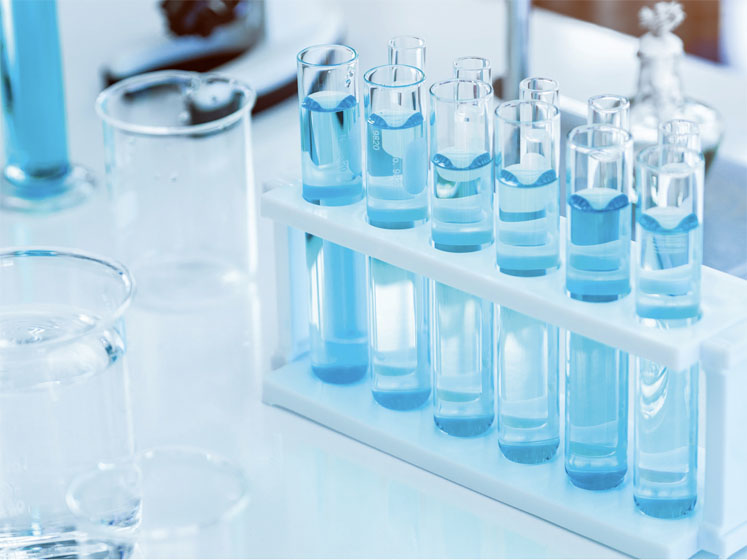The biologics manufacturing industry has seen rapid growth in recent years as these novel drugs provide access to targeted treatment for some of our most pressing medical conditions.
As we meet the needs of an ageing global population, biologics bring the hope of a cure for some of the world’s most prevalent diseases, such as heart disease, cancer, Alzheimer’s, diabetes and rheumatoid arthritis.
Biologics promise targeted treatment with fewer side-effects and the first tentative steps towards personalised medicine, but the field is still in its infancy. How do we nurture this fledgling industry and provide the tools and structure to allow it to thrive? How do we ensure that we aren’t the bottleneck preventing its success?
The growth in the biologics market is projected to be rapid, reaching $580.5 billion (approximately €513.5 billion) by 2026.1 The first biologic, the human insulin Humulin, reached the market in 1982 and since then we have seen a steady investment in biologics research and production (led by the US and Western Europe).
It’s been a slow and steady journey to this point as facilities develop to meet the unique challenges offered by biologics production versus the small molecule: biologics are large and complex and require the use of living systems for their production.
Although there have been great leaps in technological developments to support the rise in biologics, we still have a way to go to propel this industry. Single-use technology has played a significant role in bioprocess risk mitigation and production efficiency, but it will be the spirit of continued collaboration that will enable biologics to thrive.
Mobilising mAbs
It’s important to make one point clear: the rise in biologics doesn’t foretell the end of the small molecule. The FDA-approval rate in the US for small molecules and biologics shows a steady increase in new molecular entities (NME) in both categories … and the FDA’s Center for Drug Evaluation and Research (CDER) demonstrates a compound annual growth rate (CAGR) of more than 10% for both small molecules and biologics in the past decade.2,3

There is clearly a market for both products, but biologics does show a departure from mass-produced and mass-consumed drugs. Biologics offer a targeted approach to treating disease and do so with high specificity and efficacy — an approach that provides a cure rather than a treatment.
We are already seeing huge success in the use of monoclonal antibodies (mAbs) to treat cancer, Crone’s disease, Alzheimer’s and a whole host of other incurable conditions by activating the body’s immune system to destroy diseased cells.
There are now more than 100 approved mAb therapies … and global markets are showing steady growth. The Latin American Monoclonal Antibody market, for example, was worth $4.46 billion in 2020 and is expected to be worth $7.01 billion by 2025.
Of course, the challenge now comes in harnessing this therapy, reducing the enormous costs and simplifying the intensive and complex production process.
From mAbs, interleukins and therapeutic vaccines to emerging cell and gene therapy treatments, highly complex and multimolecular treatments simply can’t be processed in the same way as their small- molecule counterparts.
Working with live cells while ensuring drug integrity and sterility requires a fresh manufacturing approach. For example, growth vectors and end products are more susceptible to aggregation and degradation (owing to temperature and light sensitivity).
Equipment durability and robustness is also being tested to new levels as processes become more intensive and continuous. Finally, with new formulations and delivery methods in development, there are new challenges for critical processing and filling steps.
With a variable end product, the process has to become the regulated and tested entity, and this brings a new approach to quality assurance. Collectively, these challenges form uncharted territory, a new landscape of possibilities and pitfalls that only a collaborative approach can navigate.
Increase, intensify and maintain
To meet the future requirements of bioproduction, a multipronged approach needs to be considered.
Increase capacity: Biomanufacturing capacity is on track to increase 45% by 2023 to reach a total global manufacturing volume of 6,400,000 L — up from 4,400,000 L in 20184 — but with demand growing at 10% per year, the current growth plans will not satisfy the need.
With more than half this capacity sitting in the US and 93% of mAbs being produced in the US and Europe, there is a clear requirement for expansion.
With life expectancies rising globally and the increase in average income for many emerging markets, chronic diseases are steadily rising, especially in emerging markets such as Asia-Pacific and Latin America.
More urban lifestyles and less exercise are also contributing to this increase, with rising rates of obesity leading to higher instances of diabetes and cancer … among other diseases.5,6
This is driving the growth of the biologics market alongside higher acceptability for these innovative therapies. Hurdles remain, particularly regarding high-capital investment and strict regulatory requirements resulting in high cost of therapies and limited patient access.
Critical players are already investing in these emerging markets but countries and organisations with existing expertise will need to further expand into Asia-Pacific, Latin America, Africa, South America, Eastern Europe and Russia.
With lower price points, we’ll see biosimilars rising to meet the demand of the developing nations and this will bring its own challenges. Many biopharmaceutical suppliers, including Watson Marlow Fluid Technology Group (WMFTG), are already expanding their global operations footprints, supporting a regional approach to developing and distributing novel biologics and biosimilars.

Watson-Marlow 530 peristaltic pump
Intensify processes: Process intensification, as a means in itself, and also as a route to continuous bioprocessing, will further springboard the viability of biologics for broader use.
This will be a journey. As each process is intensified, another bottleneck will be identified and will, in turn, be intensified itself, leading to a more streamlined and efficient manufacturing system. BioPlan Associate’s recent 16th Annual Report and Survey of Biopharmaceutical Manufacturing Capacity and Production shows a commitment to this approach:
- 37% of respondents indicated that they would be testing novel downstream equipment such as purification and chromatography equipment
- 33% also planned on testing novel upstream equipment, such as perfusion technology
- 45% of US respondents are focused on developing better continuous bioprocessing downstream technologies, versus 33% in Western Europe, perhaps highlighting that the leading role that the US is taking in this field
- this is mirrored in the fact that 42% of Western European respondents highlighted downstream continuous bioprocessing as a problem area, compared with only 28% for the US.7
Hand-in-hand with this approach comes a focus on scaling-out as a means of moving from the lab bench to production. Small systems will be run in parallel, in a continuous process to achieve the capacity needed, rather than the scaled-up batch systems so prevalent in small molecule production.
Maintain product integrity
Single-use technology is undoubtedly the perfect partner for the biologics market, offering a complete fluid pathway. With sterility safeguarded and fast changeovers guaranteed, companies are adopting disposable technology as the solution to efficient biologics manufacturing.
Central to biologics production is the need to reduce bioburden and eliminate the risk of particulate and endotoxin presence within the end product. Single-use technology is already being used in novel ways: the individual parts may be single-use but the process is often continuous, extending the “single-use” to a period of many months of service.
To reduce risk and provide parameters in which our equipment can operate, WMFTG has been testing its fluid paths portfolio to meet these evolving performance requirements.
There are no regulatory frameworks for single-use technology in this space but, by working together with other suppliers, biopharmaceuticals and the regulatory bodies we are defining best practice.
WMFTG is working on committees within the Bio-Process Systems Alliance BPSA and SPP BioPhorum to address these issues and create the robust criteria that will drive success.
Every one of us has a vested interest in seeing novel biologics reach the market. We know that these drugs will have life-changing effects for patients living with chronic and life-limiting diseases; and, by working together, we can make sure that they get to the people who need them.
The rise of the biosimilar
As biologic patents come to an end and a wider range of biosimilars go into production, bioprocessing will be faced with even greater challenges. We’ll see new and existing producers in China and India expand biologics production as they meet the need of an emerging market in the developing world — one that can access the lower cost of biosimilar products.
Herceptin is one such medicine approaching the end of its patent, resulting in Roche making deals in both China and India and offering the medicine at a significantly reduced price to avoid competition.8

Latin America is another burgeoning biosimilar market, with Brazil leading the charge (owing to its population and market size) and Argentina and Mexico following closely.9
Many biologic final products cannot be tested for conformity and consistency in the same way that a small molecule can. It is the manufacturing process that must demonstrate uniformity and best practice.
Standardised and trusted single-use components — and tried and testing fluid pathways — will pave the way to success in this market. As biosimilars reach regulatory approval, the standardisation and compliance of production technology will be a major part of the success criteria.
Learnings will be taken from the US and Western European markets and suppliers will need to ensure that they can meet the demand for their products wherever they are used. WMFTG recognises the importance of regional-based factories and distribution centres to meet future biologic economics and product demand.
Collaborating to fight a dual threat
Biologics are so important to the future of medicine because they offer a targeted approach to delivering effective treatments and cures to some of the most widespread medical conditions. We face a dual threat in our culture today:
- pathogens are ever evolving and we need to adapt preventive and therapeutic responses to these new threats as they emerge
- as we live longer, we encounter more ailments and they become more difficult to cure in our ever-changing bodies.
By developing specific and targeted treatments, we can start to fight both threats while reducing side-effects and treating conditions more effectively. The next few years will see huge advances. We’ll see a flow of advanced therapy medicinal products (ATMP), including cell and gene therapies, reach patients and we will see the impact that they will make.
Not only do we need to develop more effective treatments, we need to do this faster, more cost-effectively, at scale and at a regional level. Without investment and focus on these goals, we will limit the number of novel therapies that can reach patients.
One thing we aren’t lacking in is brainpower. As a group, we have the answers and we will solve them through collaboration.
By continuing to bring stakeholders together, from the regulatory bodies to the manufacturers, license holders and suppliers, we can create a culture of open dialogue, where we all understand the challenges and we work together to solve them.
References
- researchandmarkets.com, “Global Biologics Market Size, Market Share, Application Analysis, Regional Outlook, Growth Trends, Key Players, Competitive Strategies and Forecasts, 2018 to 2026,” April 2018.
- www.fda.gov/drugs/development-approval-process-drugs/new-drugs-fda-cders-new-molecular-entities-and-new-therapeutic-biological-products.
- https://drug-hunter.com/2020/01/01/2019biologics.
- https://bioprocessintl.com/bioprocess-insider/facilities-capacity/biomanufacturing-capaci-ty-45-growth-but-new-blockbusters-could-leave-shortage/?utm_source=hs_email&utm_medium=e-mail&utm_content=78929443&_hsenc=p2ANqtz-_X6rvi0jhFRkeH26FYoYU6MrJzFMw0AzYwxMMsBHDN6SG-Vkto8qNquk5eT7NTCW9wYqbVEkNNVn1SjjgfbuFjbZ880ww&_hsmi=78929443.
- www.envisioninteligence.com/industry-report/asia-pacific-biologics-market.
- www.statista.com/topics/5887/cancer-in-latin-america/#:~:text=Breast%20and%20prostate%20can-cer%20are,cases%20per%20100%2C000%20population%2C%20respectively.
- BioPlan Associates, 16th Annual Report and Survey of Biopharmaceutical Manufacturing Capacity and Production: A Study of Biopharmaceutical Developers and Contract Manufacturing Organisations (April 2019).
- www.pharmafocusasia.com/strategy/personalised-medicines.
- www.pharmamanufacturing.com/articles/2019/biosimilars-are-coming.




